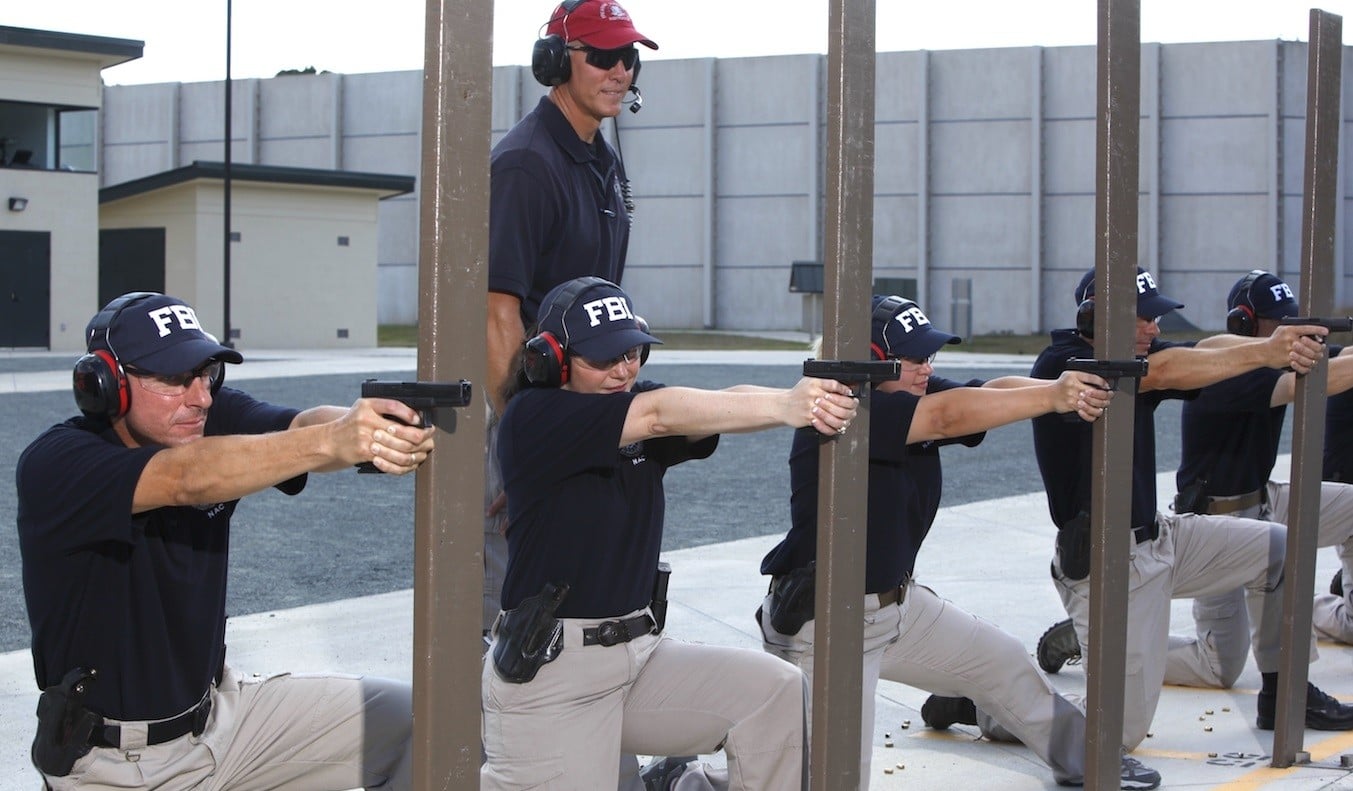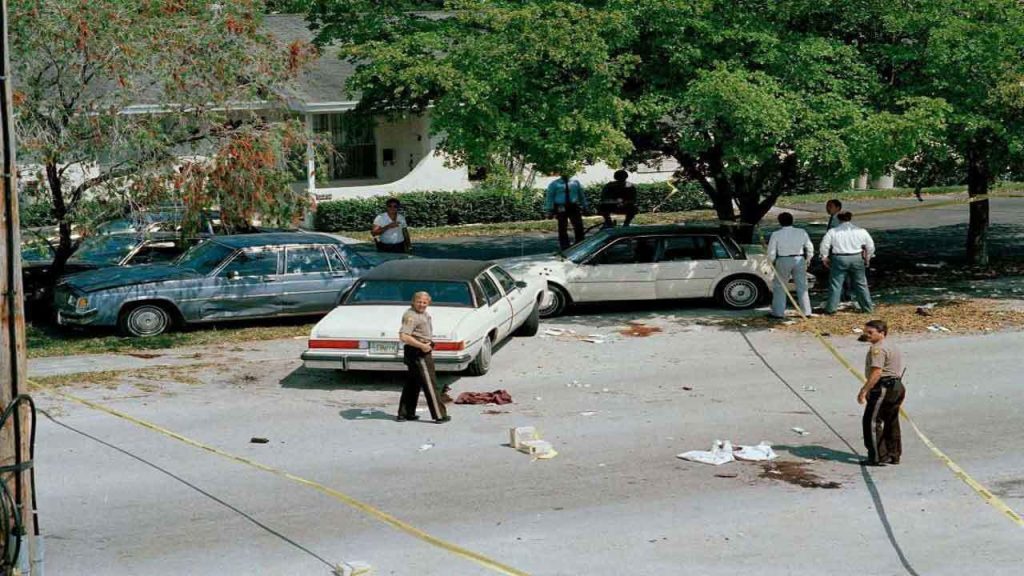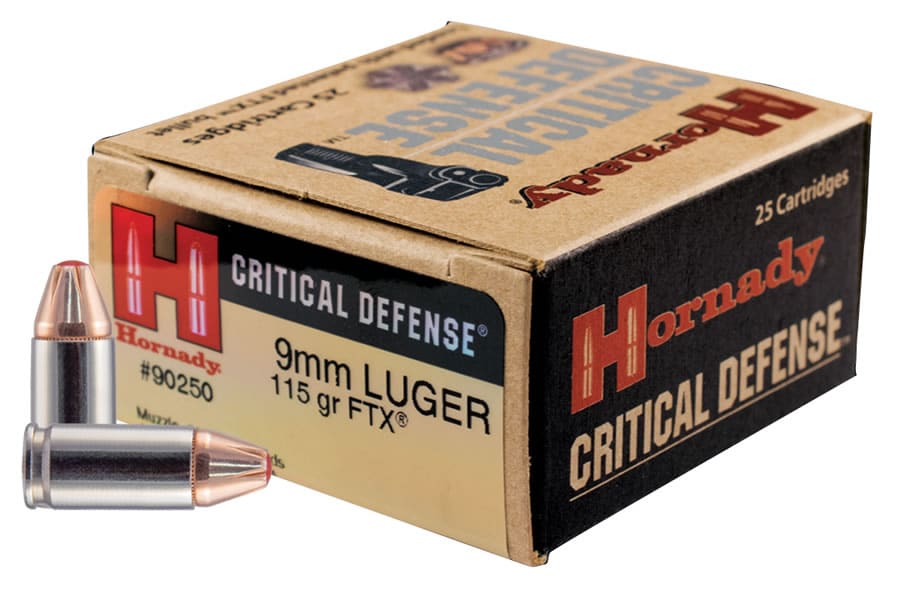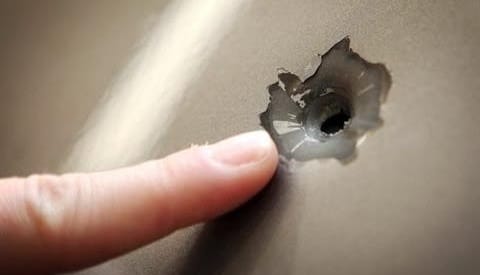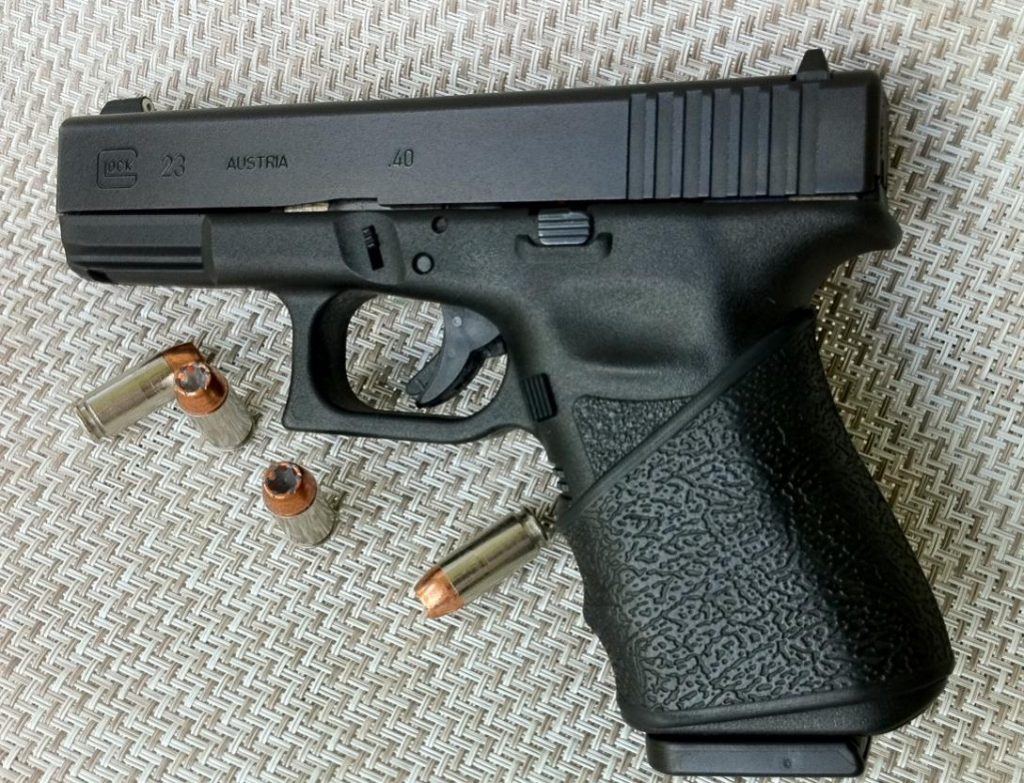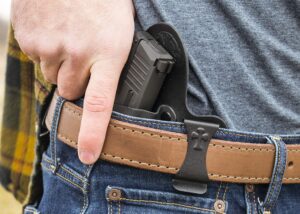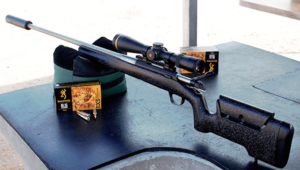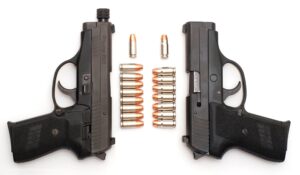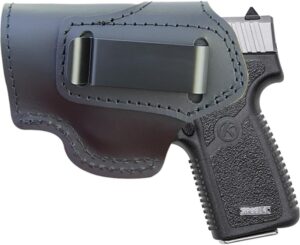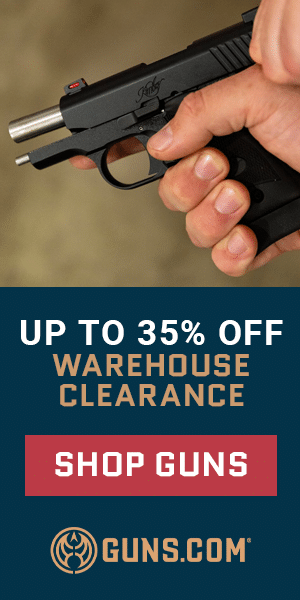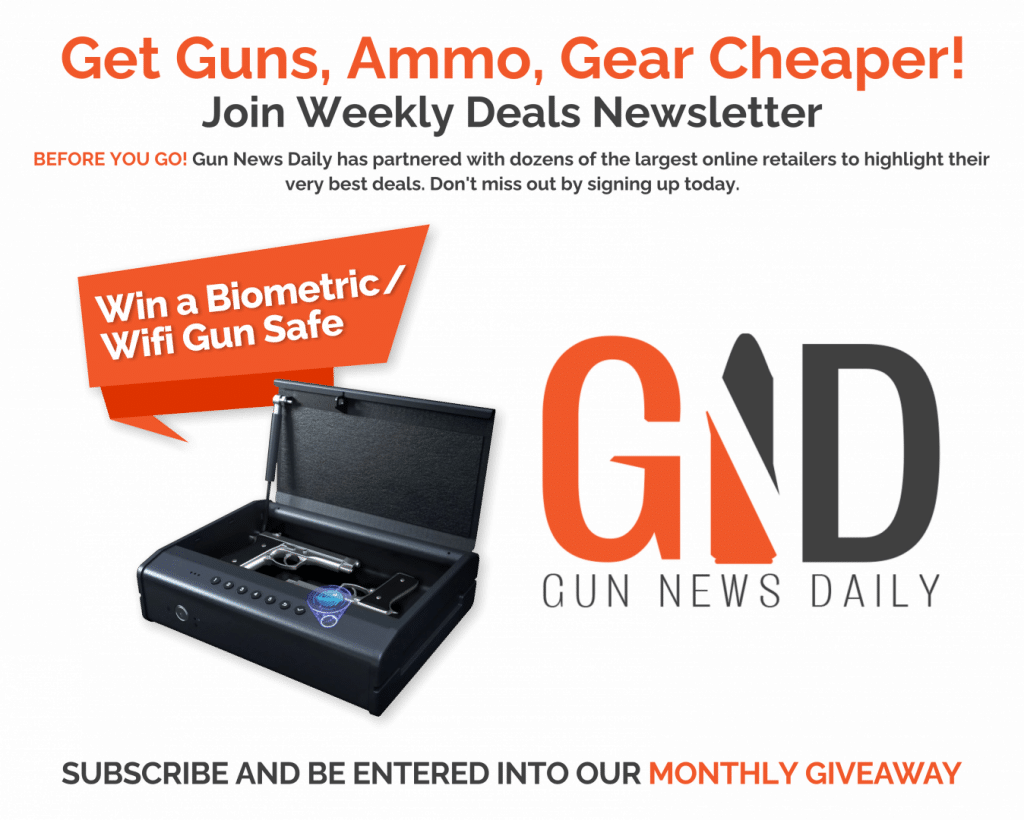Just something I want to get off my chest real quick before we get into 9mm vs. .40 S&W. I’ve said this a million times and I’ll say it again: I don’t like the 9mm. I never shy away from the fact that I only have a soft spot in my heart for two cartridges: the .45 ACP, and the .357 Magnum. The 9mm will never replace either.
With all that said, I don’t hate the 9mm (or any other cartridges besides the two I mentioned) either. Far from it. I don’t hate any cartridge — on the contrary, I see them for what they are: tools, each made for a specific purpose.
Get Great Guns And Ammo Deals!
SAFEST NEWSLETTER - WE WILL NEVER SELL YOUR EMAIL
No Spam - No Selling Your Email
Now that that’s out of the way, let me tell you why I’m writing this 9mm vs. .40 S&W article. If you’ve been following our series of Handgun Caliber Showdowns, you would know that so far, the 9mm has been untouchable.
We’ve pitted it against several different handgun calibers: the powerful but largely unpopular .357 SIG, the ageless yet somewhat ageing .38 Special, the relatively weak but still good enough .380 ACP, and the venerable .45 ACP. The closest that came to winning was the .45 ACP — but even with its popularity and effectiveness as a man-stopper, it could only manage a measly draw.
ANOTHER CALIBER WARS DISCUSSION — WHY EVEN BOTHER?
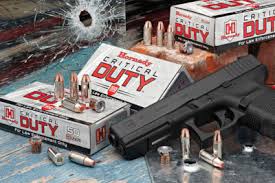
I wouldn’t bother arguing with the guy. All of us only see what we want to see. He’s got a real bad case of cognitive bias towards the little cartridge so there’s little point in arguing. Besides, he doesn’t care that I’m biased towards the two cartridges I mentioned above, so why should I care about him?
You Asked For It
But we’ve been receiving emails requesting for us to write a comparison piece on the subject of 9mm vs. .40 S&W since my very first Handgun Caliber Showdown article was posted in the fall of 2017. Figured I’ve been putting off this write-up for far too long — after hearing my friend rave about the FBI moving back to the 9mm, it might be time for me to chime in.

EVERYTHING WRONG WITH THE FBI’S DECISION
I don’t have a beef with the feds — or any other person for that matter — about the choices they make and how/why they make them, because I’m the type who likes to mind my own business. However, the critical part of me can’t help but ask questions. Here are some of them:
9mm vs. .40 S&W – Recoil
- If the .40 S&W’s recoil was really an issue and they wanted a handgun caliber with as little recoil as possible while still being terminally effective, why choose the 9mm when there are other cartridges that outclass it in the handling department, e.g. .22 TCM, 7.5mm FK, FN 5.7×28mm, etc.? Even standard pressure .380 ACP loaded with modern fluted bullets (e.g. Lehigh Defense Penetrator, Defender, etc.), will outclass typical 9mm JHP +P loads in the recoil vs. terminal performance department.
- If firearm longevity was a problem, why did they choose 9mm +P loads when those can wear the typical service pistol’s barrel just as fast as the .40 S&W could, if not faster? Why didn’t they just go with standard pressure 9mm or even .380 ACP loaded with, again, lightweight fluted bullets? Or maybe they could have looked into a higher-energy, lower-pressure cartridge like the .400 Corbon?
9mm vs. .40 S&W Capacity
- If they really needed more rounds in the mag because most of their agents are bad shots, why didn’t they go with the FN 5.7×28mm? The cartridge is widest at its base with a diameter of only 7.95 mm (0.313 inches), making it roughly 20% smaller than the 9mm which, by comparison, is widest at its rim with a diameter of 9.96 mm (0.392 inches). What this 20% smaller footprint means is that for any 9mm mag that can hold up to 20 rounds, a similar-size FN 5.7×28mm mag can hold up to 25 rounds — carrying two spare mags gives the operator a 15-round advantage (i.e. 60 rounds of 9mm vs. 75 rounds of FN 5.7×28mm).
- If they really think modern bullet designs makes the 9mm as effective as the .40 S&W as far terminal performance, why are they sticking to only two types of 9mm loads, both using jacketed hollow points? Bullet design technology has come a long way since the 1986 Miami-Dade shootout. Why limit themselves to just hollow points?
So what’s so wrong with the FBI going back to issuing the 9mm as their agents’ standard sidearm? Everything. I can think of only one reason why the FBI made this decision: to cut costs. Some conspiracy theorists would go so far to say it’s because of politics, which doesn’t sound too far off — politics and money go hand-in-hand. But for the purposes of this article, I won’t bother with it.
FIXING SOMETHING THAT ISN’T BROKEN
In my opinion, the FBI didn’t have to switch to the .40 S&W after the tragic event that transpired during April 11, 1986. Here are a few reasons I can think of:
- The 9mm ammo they used, Winchester Silvertip 115 gr. Hollow Point, aren’t any good, especially for the price;
- More powerful 9mm loads were already available at the time, e.g. Super Vel — they didn’t have to commission anyone to design and develop a new cartridge;
- Several agents carried revolvers chambered in.357 magnum but only loaded .38 Specials in them, wasting their firearm’s ballistic potential;
- One of the FBI agents lost his firearm by placing it on the passenger seat while ramming the perps’ car;
- The agents got a little too overconfident. This backfired on them, literally so because one of the criminals had a Ruger Mini 14 in .223;
What could have been a one-sided gun fight turned out to become a bloodbath of sorts, one that unjustly favored the bad guys. It was eight feds vs. two ex-military homicidal maniacs turned bank robbers.
The feds had all sorts guns available to law enforcement personnel during those days: various types of revolvers loaded with .38 Special LSWCHP, three standard issue Smith & Wesson Model 459 pistols in 9mm, and a Remington M870 loaded with 00 buckshots.
Criminal Advantage?
Granted, the criminals had a slight advantage as far as firepower (they had a Ruger Mini 14 chambered in .223 Remington, a S&W 586 and Dan Wesson both loaded with .357 Magnum, and a Smith & Wesson Model 3000 loaded with #6 birdshot) — but they were up against eight people. Eventually it became one against seven, stacking the odds greatly against the perps.
But despite the advantage the feds had over the two perps, when the gunfight was over, two of them ended up dead, one almost died from blood loss, another one kind of died because of a shot to the groin (some sources say he was paralyzed for life), and three others were wounded.
There were a lot of reasons why things turned out the way they did, and there’s an infinite number of ways the shootout could have played out. But the biggest blame was put on the 9mm shooting platform – specifically the handgun and ammo three of the feds carried.
So, not too long after the shootout, the S&W Model 459 was replaced by a semi-auto handgun manufactured by the same company, the S&W Model 1076. It was chambered in a new caliber, one deemed by the Feds themselves way too powerful for everyday law enforcement use: the 10mm.
FBI agents with smaller stature found themselves struggling to control its recoil, so they started loading it with less powder. Because of the reduced powder load, a good portion of the case was practically useless so they decided to have it cut off. They commissioned Smith and Wesson to develop this new cartridge.
.40 S&W is Born
Thus, the .40 S&W was born. It would later be loaded in handguns built for the 9mm, most commonly those manufactured by Glock. This made it really popular among law enforcement and civilians all around the world to the point that its parent cartridge, the 10mm, would become practically nonexistent for quite some time – this, even when its detractors call it the 40 short-and-weak.
Up to this day, anyone who has issues with the .40 S&W would use the glass half empty/half full argument. But as we established in the previous section, there doesn’t seem to be a lot of good reasons why the FBI would want to revert to the weaker 9mm as their standard issue sidearm caliber outside of budget constraints.
9mm vs. .40 S&W – IS THE GLASS HALF EMPTY OR HALF FULL?
There are two camps to this debate when arguing the merits and disadvantages of the .40 S&W as a self defense round:
- It’s a good compromise between the 9mm and the .45 ACP, two iconic handgun cartridges that have withstood the test of time, having the magazine capacity advantage of the 9mm and the stopping power of the .45 ACP
- It’s never going to be a good compromise because it tries to offer the best of both the .9mm and .45 ACP but can’t quite accomplish what either cartridge excels at. It is then deemed by its detractors to be a worse version of both — having the tendency to overpenetrate like the 9mm while not providing nearly as many rounds in the mag; and having worse recoil than that of the .45 ACP.
.45 ACP and the .357 Magnum
As I’ve mentioned in the intro, I’m personally biased toward only two cartridges: the .45 ACP and the .357 magnum. I don’t care too much about any other cartridges besides these two, which includes the 9mm and to a bigger extent, the.40 S&W — but for the latter, it’s not just because of it being a bad compromise between the 9mm and .45 ACP.
I think the .40 S&W is never going to be as good as any other cartridge because no matter its intended purpose, there will always be a better handgun caliber:
Why the .40 S&W Will Never be King
- It will never be as fast as the 9mm;
- The .38 Super, 9×23 Winchester and even some 9mm +P+ loads offer .357 magnum-like performance while allowing more rounds in the mag;
- The .45 ACP, being an inherently bigger cartridge, makes significantly larger holes that it can make use of cheap FMJ bullets just fine, making it a practical option as far as ammo cost, especially when compared against run-of-the-mill 9mm JHP loads for self defense;
- Modern bullet designs, i.e. fluted bullets, give smaller/weaker handgun cartridges (9mm, .380 ACP) superb terminal performance — but being smaller again allows for more rounds in the mag, and being weaker means they’ll have less recoil;
- The .400 Corbon being a 10mm-level cartridge is significantly more powerful, but with a lower pressure rating (SAAMI 29,000 vs. the .40 S&W’s SAAMI 35,000), it will not wear barrels as fast — at the cost of fewer rounds in the mag;
9mm Load Options vs. .40 S&W
- Whereas the 9mm and the .45 ACP have several load options (standard pressure, +P and +P+ loads) and wildcat upgrades (960 Rowland for the 9mm, 45 Super and 460 Rowland for the .45 ACP), the .40 S&W is only available in the same old boring load it had initially come in — and I doubt anyone would attempt to create a wildcat upgrade for it because it already has one in the 10mm. Sadly, a handgun chambered for the .40 S&W can’t be upgraded to handle the 10mm;
- The 10mm offers better ballistic performance than the .40 S&W with the same number of rounds in the mag. It can also be down-loaded to mimic .40 S&W ballistics. As such, it has an undercurrent — what started out as a cult following is slowly but surely growing in strength and numbers. And with the recent move by the FBI casting a shadow over its once more popular but weaker offspring cartridge, the 10mm may very well see a resurgence. If and when that happens, the .40 S&W will be done for;
Colion Noir nailed it when he said you’ll only love the .40 S&W if you’re suffering from middle child syndrome:
I think it doesn’t have any real purpose besides being a placeholder. No matter how you slice it, it’s either a cartridge that barely fills the caliber gap between the 9mm and the .45 ACP, or just the “Special”, i.e. weaker version of the 10mm.
9mm vs. .40 S&W – PRICING: THE 9MM’s ACE IN THE HOLE (AS ALWAYS)
If you’ve read about our 9mm vs. 45 ACP comparison article, you’d know that while 9mm FMJ ammo can be around 65.27% cheaper than the .45 ACP ammo, the former didn’t win against the latter because no one carries 9mm FMJ as a defensive round, being it tends to overpenetrate (potentially hitting other people besides the intended target) and it makes small holes, which doesn’t help in situations where you’d want the bad guy incapacitated quickly.
The .45 ACP, being it utilizes a wider, slow-moving projectile, will make bigger holes by default and will not overpenetrate. This is why it isn’t uncommon to hear about people saying they carry .45 ACP FMJ as a self defense round.
9mm vs. .40 S&W Pricing
So when comparing prices for self defense loads, .45 ACP FMJ costing only around 83¢ per round is much, much cheaper than the cheapest 9mm JHP for self defense at 86¢ per round. Thus, as far as pricing, when compared against the .45 ACP, the 9mm is at a great disadvantage.
The same can’t be said about the .40 S&W, unfortunately. Using a bullet that is only marginally wider than the .355-inch projectile a 9mm cartridge uses and also being a fast-moving round, .40 S&W FMJ will overpenetrate while making holes that aren’t as big as the .45’s. This is why people with a .40 S&W handgun are half-hearted about carrying FMJ for self defense.
Going back to pricing, these days the cheapest 9mm JHP, i.e. a box of Hornady Critical Defense 115gr FTX standard pressure JHP load costs 86¢ per round. The cheapest .40 S&W JHP load, i.e. ammo manufactured by the same company marketed under the same brand and using the same brass and bullet, costs $1.09 per round. That’s a difference of 23¢, which makes the .40 S&W around 26.7% more expensive than 9mm.
That being the case, I’m pretty sure the only reason the FBI reverted to having the 9mm as their new standard issue sidearm shooting platform after having the .40 S&W for more than a couple decades is because of its price. Otherwise the move just doesn’t make a whole lot of sense.
IS THE .40 S&W REALLY THAT BAD?
Well, not really, no. For one thing, the .40 S&W is a good all-around cartridge. People I personally know who carry .40 S&W like to carry lighter loads between 135gr and 155gr. I’ve read from a few people online that heavier .40 S&W loads, i.e. 185gr, can really do a number on up to deer-size game using the correct bullets, e.g. hardcast lead flat nose.
Also, being an inherently larger handgun caliber compared to the 9mm, its case has more room for powder. It can be hand-loaded to its absolute maximum pressure which will make it rival entry-level .357 magnum loads and up to entry-level 10mm loads.
And comparing standard pressure loads, the .40 S&W penetrates barriers better than the 9mm too, as it started its life as a law enforcement cartridge. But this comes as a double-edged sword type of deal in that while the .40 S&W may very well be regarded as one of the best semi-auto handgun cartridges when it comes to penetration, you should never buy .40 S&W FMJ ammo for self defense because it overpenetrates.
9mm vs. .40 S&W – CONCLUSION
While there are some of us here at GND who can be considered 9mm fans, there are those like yours truly who don’t like it too. I would personally choose the .45 ACP over the 9mm any day of the week, and don’t even get me started about how I’m hating on the 9mm for beating almost all the handgun cartridges I’ve pitted against it thus far.
9mm vs. .40 S&W – The Winner?
But there’s no denying that there are a lot of advantages to Georg Luger’s .35-caliber brainchild cartridge: it allows for a ton of rounds in the mag, is easy to train with, easy to handle and easy to shoot. It might be ballistically weaker than the .40 S&W, but the USMC, the Feds and a host of other military and law enforcement agencies everywhere in the world carry it — a testament to its terminal effectiveness. It will get the job done, no worse than the .40 S&W.
The .40 S&W on the other hand, while not entirely a bad choice for a handgun cartridge, suffers greatly from one thing: pricing. In a perfect world where guns would never be needed to defend one’s life, liberty or property, where the 9mm and .40 S&W could co-exist without ammo manufacturers charging less for the former or more for the latter, this handgun caliber showdown could easily be declared a draw.
But ours is never going to be that perfect world. To me, when comparing one caliber to another, the most important thing to consider is accessibility (and with it, cost); because there’s little point to talking about the ballistic superiority of any particular caliber over another or some other tacticool attribute it might have that some don’t when one can’t purchase enough of it to A, practice with; and B, defend themselves with.
So for this round of our series of Handgun Caliber Showdown, with bit of a heavy heart, I must again declare the 9mm as the winner. Sorry, .40 S&W fanboys. You can start posting hate comments now — trust me, I’d understand.


